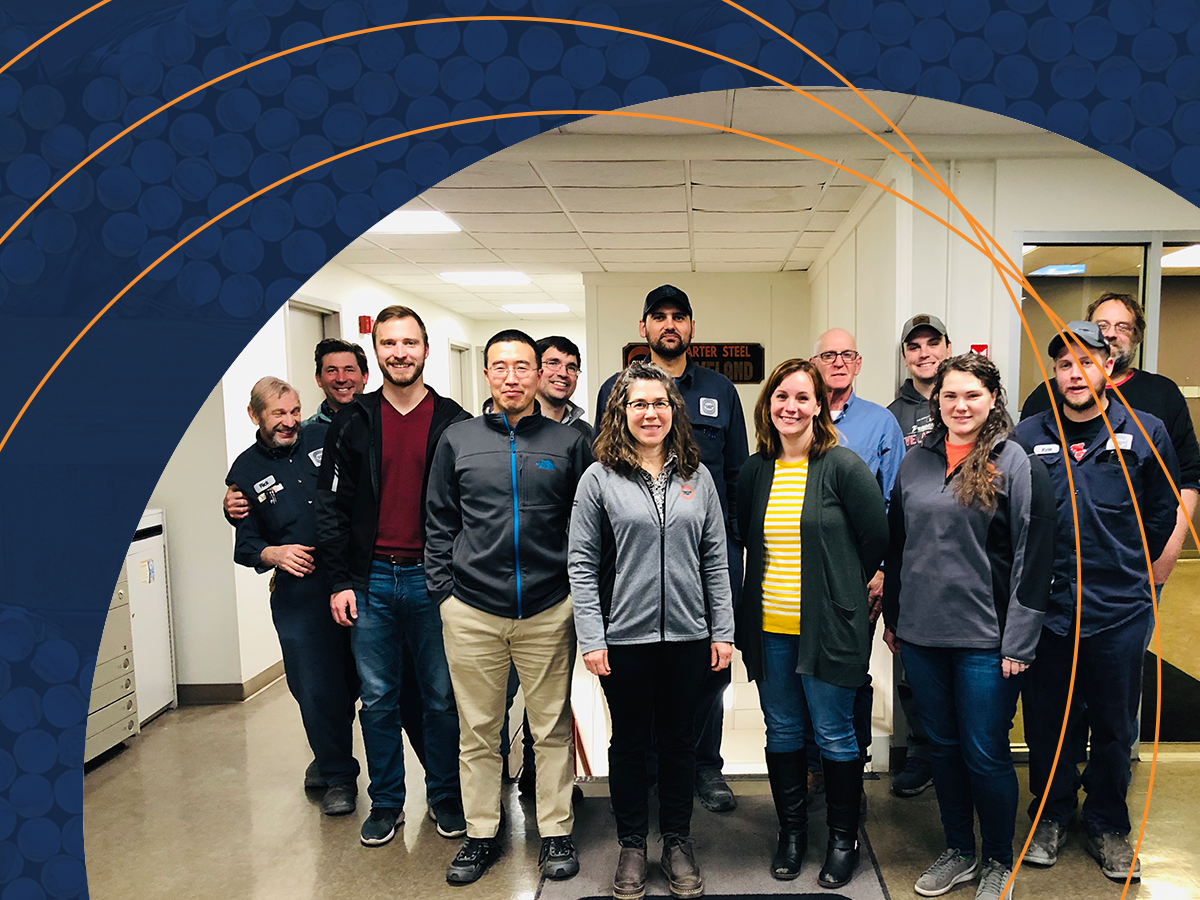
Charter Steel Energy Manager Katie Dimmer has a name for the Charter Steel employees who work to help cut energy costs. She calls them the “energy army.”
“Without the energy teams we have throughout Charter Steel, we could not have implemented the energy management system,” Katie said. “Cutting energy costs and reducing consumption is really a group endeavor.”
.jpg?lang=en-US&width=200&height=300) Charter established an energy department in 2016 to reduce costs and environmental impacts by optimizing energy use within the company. An energy management system was put in place to establish a process to identify opportunities for energy efficiency improvements, implement energy-saving technologies and practices, and monitor energy consumption. The energy department also assesses and manages risks associated with energy supply and pricing.
Charter established an energy department in 2016 to reduce costs and environmental impacts by optimizing energy use within the company. An energy management system was put in place to establish a process to identify opportunities for energy efficiency improvements, implement energy-saving technologies and practices, and monitor energy consumption. The energy department also assesses and manages risks associated with energy supply and pricing.
Recently, Katie shined a light on Charter Steel’s goals and accomplishments.
Q: What is Charter’s basic approach to managing energy costs?
KD: There are two routes Charter takes to manage energy costs. One is to work with our local utilities, local energy groups and local policy makers to ensure we are receiving the lowest rate possible for natural gas and electricity. The other is to use our energy management system to work on improving energy efficiencies and reducing energy consumption.
Q: Why is it important for Charter Steel to do this?
KD: Utilities are a significant cost for Charter Steel. We need to manage our rates and consumption to stay competitive in the current market.
Sustainability to Charter Steel means reinvesting in our people, local communities and the environment for a sustainable future for all of us. By managing the use of our resources and investing in renewable energy at our sites, we are doing just that.
Q: What have Charter’s most significant initiatives been in its commitment to reduce energy consumption?
KD: Charter Steel Saukville was the first steel mill in the U.S. to achieve certification for the ISO50001 energy management system. This system allows us to strategically look at our energy use, collect data and move forward with projects for energy reductions.
We have created and maintained seven active energy teams at each plant, and it’s the energy teams who really drive these changes. They are looking at data, building reports, identifying opportunities, putting controls in place and completing projects. Their effort and commitment greatly enhance what our two-person energy department has been able to accomplish.
Also, a 15MW solar project that will be going in at Saukville was just approved – it is scheduled to be operational in the second quarter of 2024. This will provide more stable rates for eight percent of our electrical consumption at the SKV site.
Q: What physical changes have been made at the three Charter Steel locations?
KD: Specifically regarding physical adjustments, we have transitioned to LED lighting at all sites. We’ve installed variable frequency drives, or VFDs, where possible to decrease power consumption. We’ve communicated efficiency standards for new purchases and automated a lot of systems. We have also generated reports for managing consumption and improving operational control for the equipment that uses the most energy. Some larger projects have been completed, like our scrap preheat project in Saukville, which received an award from the U.S. Department of Energy.
Q: How do you quantify the progress that’s been made?
KD: We use statistical analysis to compare our current energy use to our energy performance baseline year, which is 2019. By using statistical analysis, we can take out variables that might not be in our control – things like production volumes, weather and process changes. Each plant has its own performance numbers which get rolled up into a corporate number for our energy reduction goal.
Q: What can employees do to contribute to the effort to cut energy consumption and cost?
KD: Employees can be aware of the energy-using equipment and processes around them. The energy department is trying to educate employees on how to measure energy, improve efficiencies, identify operating parameters and controls, and understand the energy impacts of projects, whether positive or negative. The more we understand and measure a process, the more opportunities we have to make it better.
Q: What are you most excited about today in this important work?
KD: I am excited about where Charter Steel is headed on this journey. Our energy management system is getting stronger, and we have more reliable data going into dashboards and reports that show identifiable trends for our energy teams to investigate and understand. We are wrapping our arms around the complexity of outside funding and grants for energy projects and the ever-changing landscape of our utility rates and the energy markets.